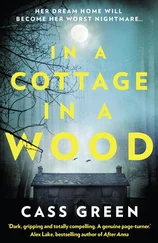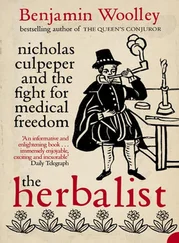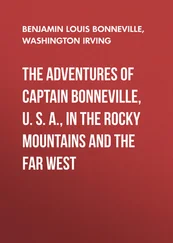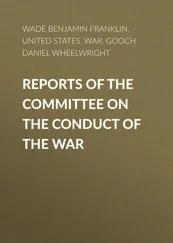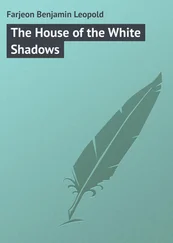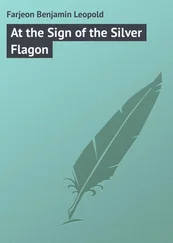‘You were right,’ I told him. ‘It’s magic.’ I brought the canvas over.
Jim’s eyelids unclenched. The picture I had made was built from memory: a portrait of him in a grey raincoat, striding along a hidden pavement. There was a sense of movement to his body, created by the Ripolin and my own rather hurried technique, as well as an unnerving stillness to the backdrop, a screen of buildings I had assembled from part-remembered walks around the city. Most of the canvas was taken up by this patchy architecture, and, because I had been aiming to check how the paint responded to different applications, the landscape it created was loosely connected: doomy red fire escapes here, watery grey brickwork there; glutinous pink railings, white-leafed trees, and strange yellow windows. And yet the disparate elements of the painting somehow coalesced. All the little experiments, seen as one, made something original. There was Jim, a concentrated figure wandering across the bottom of the image, with London shimmering, faltering, transforming in his wake. It was one of the most arresting pieces I ever made.
All Jim said was, ‘Blimey,’ which I took as a strong affirmation. He must have looked at that painting for a good forty minutes, asking me how I had achieved certain effects, wanting to know about the mix ratios I had tried with the Ripolin. He particularly liked the sense of animation it gave to the human figure — it was not clear if he recognised his own likeness in it — and I spent some time explaining and demonstrating how to handle the paint to get this result. After a while, Jim took the canvas and put it back against the wall, leaning inwards, as before. I did not know if he would let me keep it, given that I had made it with his materials, his brushes, and the longer it stayed in the unlit corner of his studio, the more I resented the fact that he had left it there to gather dust. For the next fortnight or so, the canvas remained unchecked, unmoved, while Jim went about compiling his own works in Ripolin: the same old faces copied from photographs, only brighter, punchier, more effervescent.
Then, one evening, as I was reading in my attic room, I heard the rumble of a motorbike engine in the avenue below. I looked down from the dormer to see a squat man in a tight leather jacket removing his crash helmet. He shook his head as though to free some lengthy mane of curls, though all he had was a crescent of sad white hair that hung around his baldness like a shower curtain. Stepping out of the sidecar was Jim Culvers, who, judging by the indelicacy of his voice when he called out ‘Oi, Max! I forgot the key!’ was at least seven whiskies into a stupor. The bell rang — one long, urgent trill.
I put on my clothes and went down to let them in. Vernon Glasser, the American sculptor from the upstairs studio, was out on the landing in his vest. ‘He’s lucky I was only sleeping in there,’ he said. ‘Tell him, this happens again, I’ll bring out the bolt-cutters. You tell him Vern Glasser said that.’ He trundled away, covering his ears.
At the door, Max Eversholt was courteous enough to introduce himself. ‘Very sorry about the hour,’ he said, his accent prim and pleasant. ‘We shan’t keep you long.’ He appeared embarrassed by Jim’s inebriation, and kept talking to Jim as though he were a dog: ‘Come on now, James. There you go. Watch your head there. Good chap.’
Jim groped around for the studio lights. ‘Max has come to check up on me. Haven’t you, Max?’
‘I believe I was invited,’ said Eversholt, zipping off his jacket. He hooked it with one finger and slung it over his shoulder.
‘Pssh. Don’t listen. He’s a crook.’ Suddenly, Jim looked panicked. ‘Ellie — what did you do with those sketchbooks?’
‘They’re in the trunk with the blankets.’
While Jim went to rummage for them, Eversholt inspected an assortment of canvases near the doorway. He examined each painting for no more than a few seconds, tilting his head to one side, tilting it back again. ‘These are certainly better,’ he said. ‘I can see a style emerging.’
‘Emerging?’ Jim said. He had the sketchbooks now and dumped them on the floor. ‘Don’t come in here using words like that. Emerging . I’m not forcing them out of my arse.’
Eversholt rubbed a daub of wet paint from his fingers. ‘Careful, James. Ladies present.’
‘You can say anything in front of her,’ Jim said. ‘She’s heard it all.’
‘How many has he had?’ I asked Eversholt.
‘Oh, this is nothing. I’ve seen him a lot worse than this.’ He waved Jim over. ‘Come on, old chap, let’s have a look at those sketches.’
Jim slurred back at him, ‘Nah, I’ve changed my mind. They’re no bloody good. I can’t even draw straight.’
‘Don’t be a fool now. Pick them up.’
Grudgingly, Jim stooped to gather them. He took so long about it, wobbling on his haunches, that I went over to help him. ‘Which one is the best?’ he whispered to me, and I whispered back: ‘ That one.’
Jim collapsed onto his rear, clawing at the floorboards. I gave Eversholt the sketchbook and he just nodded, skimming through it. After a moment, he said, ‘You’re getting there, Jim, getting there. I must say, it’s nice to see you drawing again — I can tell you’re really honing something here. It’s attractive work. But it needs more time. I’ll come back in a month or two, and then we can review things.’
‘Wait, wait, wait,’ Jim said. ‘There’s more. Loads of it. Show him, Ellie.’
I was not sure what he was referring to. His best work had already been dismissed.
‘Let him see the On High pile,’ he explained. ‘Go on.’
I looked at him, unsure.
‘Go on. Show him.’
Eversholt followed me to the furthest aspect of the studio, where Jim liked to store all the paintings he had lost the motivation to complete. He called them the On Highs, as in ‘on hiatus’.
Eversholt went through them with a void expression — it was such a complete look of dispassion that he must have practised it each night in the bathroom mirror, smoothing out the tell-tale wrinkles. He was wearing the oddest plum-coloured brogues and their thick heels stayed planted as he browsed the paintings. ‘I fear there’s a long way to go with these, Jim,’ he called, and started putting on his jacket. ‘Very glad to see the work, though, as always. I shall tell everyone you’ve been hard at it.’
‘Christ, don’t start spreading that around,’ Jim called back.
Then, as Eversholt was heading through into the main room to say his farewells, he stopped, sighting the back of my Ripolin canvas against the other wall. ‘No, that’s not for sale — I mean, that’s not really anything,’ I muttered, as he went to turn the picture round. Eversholt did not listen. He rolled his eyes over the image, plain-faced. It must have been that he stood there looking at it for some time, because Jim staggered in and leaned against the architrave. ‘Ah,’ he said. ‘Thought you’d all gone quiet in here.’
Eversholt circled his hand about the picture. ‘Tell me what’s happening with this. What’s the thinking?’
‘Long story, that,’ Jim said.
‘Self-portraits are indulgent. Difficult to sell.’
Jim sniffed. He looked at me sorrowfully. ‘That’s just an experiment.’
I wanted to interject and explain, but I also wanted to give Jim the chance to speak up for me.
‘Always thought that was a lot of guff, myself,’ said Eversholt. ‘This is giving me the shivers. Ditch everything else, is my advice. Give me another ten or twelve of these little experiments, if that’s what you’re calling them. Then you can have your show. I’m thinking, end of August. September at a push.’
Читать дальше



